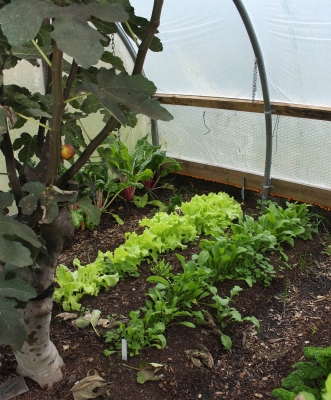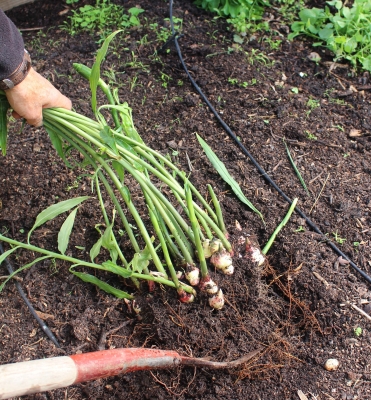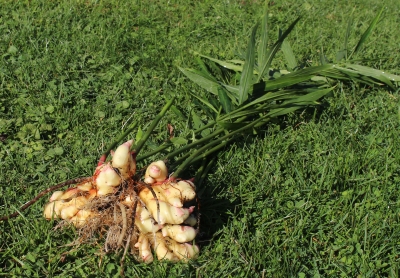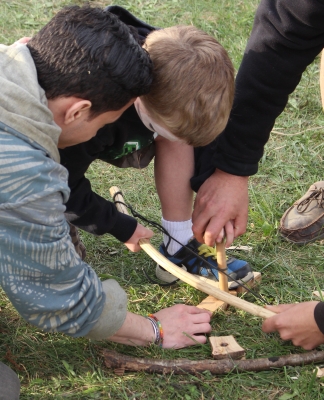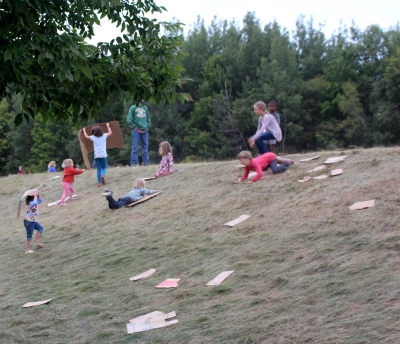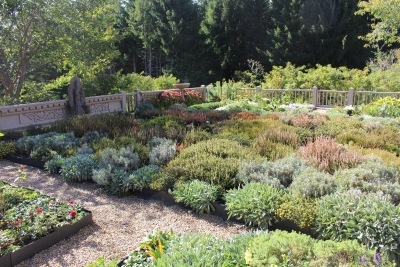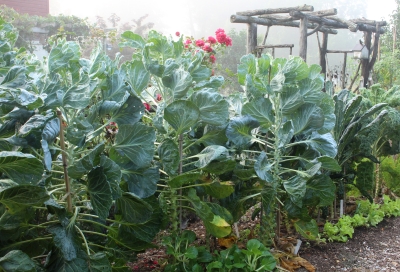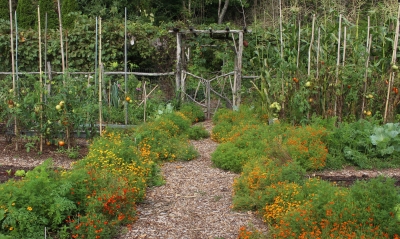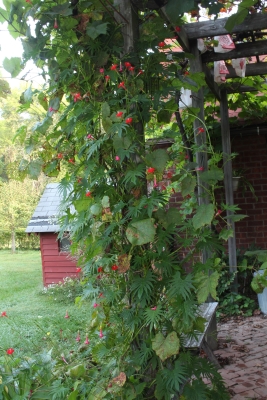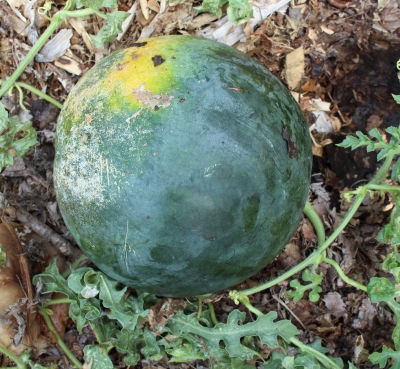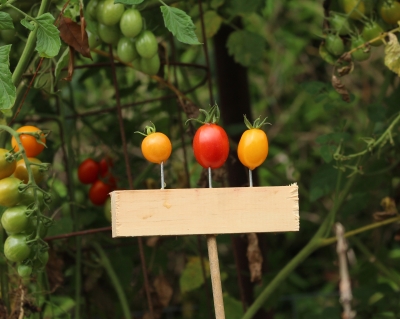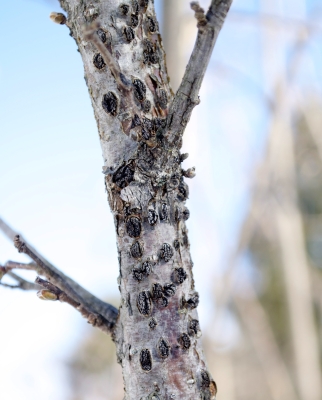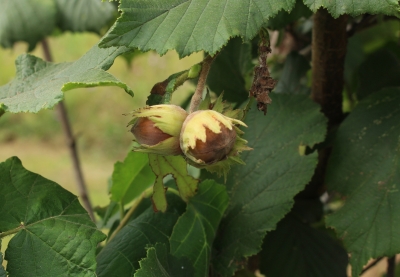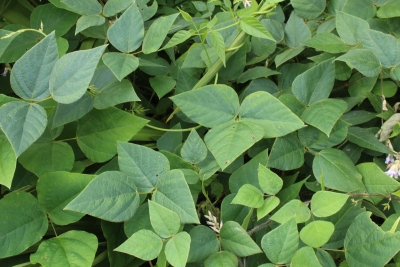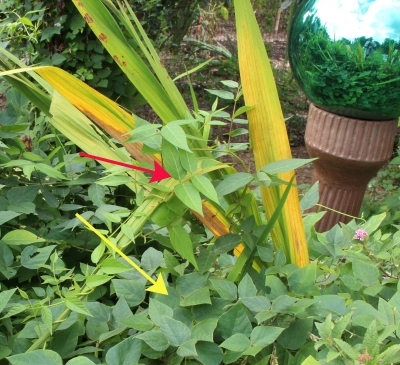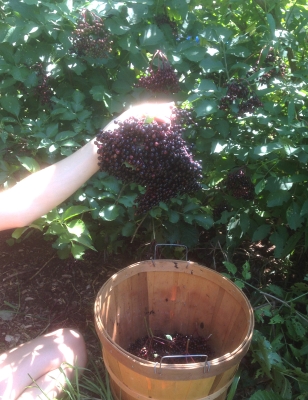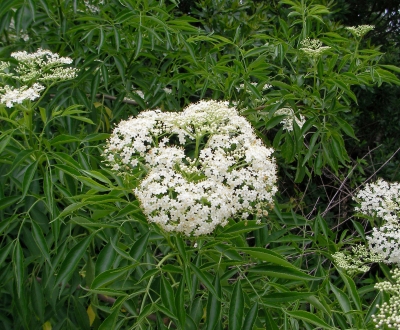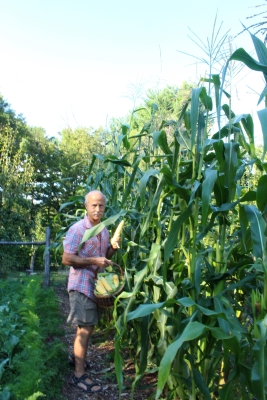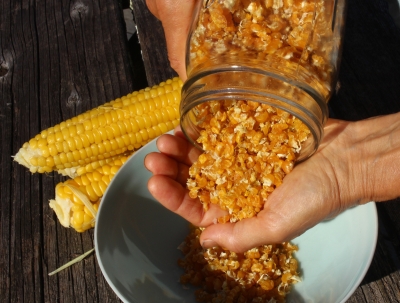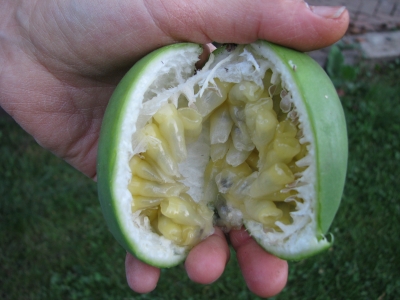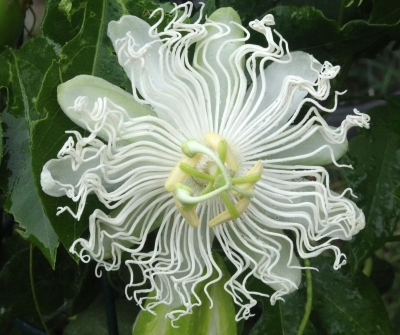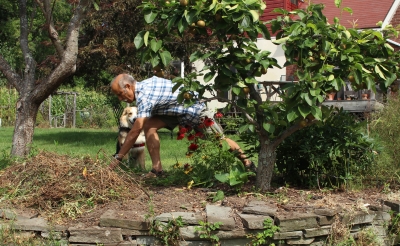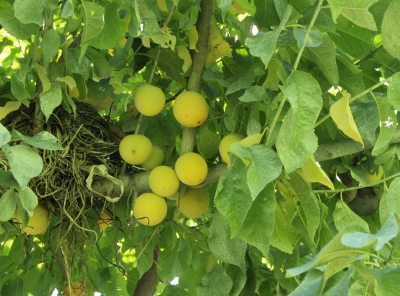CLEAN UP, THEN SHAVE
Out with the Old (Plants)
Ostensibly, I’m clearing away old plant debris from the vegetable and flower gardens to spare next year’s garden a full onslaught of overwintering disease and insect pests, and so that, come spring, the soil is ready and waiting for seeds and transplants. I’ll admit it, though: I like the garden looking neat going into late autumn. As Charles Dudley Warner wrote in his book My Summer in the Garden (1889), “the closing scenes need not be funereal.”
As of this writing, frost has not yet struck; as of your reading, it probably will have. Following that event, I will remove all dead plants. I’ll grasp the tops of smaller plants, such as marigolds and basil, give them a twist to sever the smaller roots, then lift and toss the plant into a waiting garden cart. If I tried to do that with old pepper, tomato, or okra plants, they would laugh at me. I lop off the bulk of their tops, then cut around the plant with a Hori-hori knife so that I can lift the remaining stem and main roots out of the ground.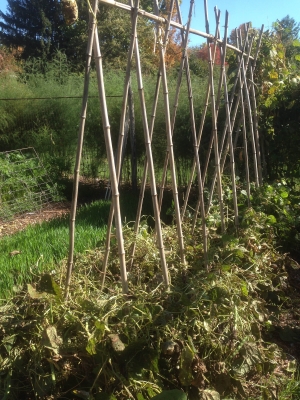
In either case, my goal is to remove everything but the smaller roots. Left in place, they’ll rot to add organic matter to the soil, leaving behind channels to let air, water, and creatures move through the ground.
Even now, before frost, cleanup is well under way. Tomatoes are spent; I cleaned them up yesterday. Beans are spent; I’ll clear them away today. Leaving bean roots in the soil is like sprinkling organic fertilizer from the free nitrogen they gathered from the air.
Along with garden plants, weeds also get cleared away, again removing only top portions and the main roots. Small roots don’t have the energy to re-sprout.
In With the New (Compost)
More than just looking neat, the cleaned up garden is — to my eye — ornamental. Think of the calm beauty of Zen gardens, some of them little more than boulders and raked gravel. Mine is wood chips (in paths) and raked soil.
Well, not really raked soil. Bare soil looks ugly to me because I know it’s too exposed to rain and wind. So as soon as I’ve cleared a bed, I immediately put a blanket on it. Before the end of September, that blanket was oat seed topped with an inch of compost. Those beds are now lush strips of green. Post-September beds get blanketed with just an inch of compost. It’s roughness helps protect the surface, and next spring I can sow seeds or plug transplants right into it. That much compost is all the nourishment plants will need for the whole growing season next year.
And then there are the beds still green with carrots, turnips, endive, lettuce, kale, and other cold-hardy plants. I’ll dig the root crops, for storage, at my leisure. The others, we will eat, also at our leisure.
Nothing Wasted
All that stuff that I am clearing out of the garden is going right into the compost pile. Yes, everything! I’m occasionally asked if I put leaves and stems that are infected or infested with blight, aphids, or other pests into my compost pile. Yes! Everything goes into the pile.
I contend that if you looked closely enough (perhaps needing a microscope) at almost any leaf, stem, fruit, or root, you’d probably find some evidence of a “bad guy” on it. No matter. The combination of time and temperature within any compost pile does them in.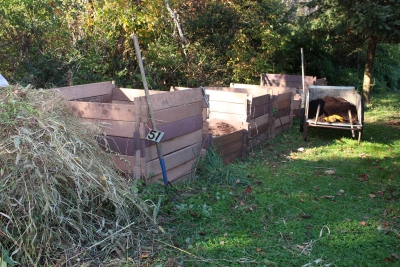
This time of year, piles build rapidly. By paying attention to water and air within the pile as well as the balance of high nitrogen materials (manures and lush greenery such as vegetable plants and young weeds) and high carbon materials (old, browning plants, wood chips, autumn leaves), I’m able to get my compost piles up to 160° F.
Soon, cooler temperatures combined with less stuff to feed the pile makes for cooler composting. I let these piles “cook” longer, the longer time making up for lower temperatures.
Lookin’ Good and Ready for Spring
Getting everything ready for winter is a leisurely process, inching along over the next few weeks. By then, tender vegetable plants and weeds will have been tucked into compost piles and beds will be blanketed in either compost, compost and growing oats, or late fall vegetables. Mr. Warner, mentioned in my opening paragraph, went on to say, “A garden should be got ready for winter as well as for summer . . . I like a man who shaves (next to one who doesn’t shave) to satisfy his own conscience, and not for display, and who dresses as neatly at home as he does anywhere. Such a man will be likely to put is garden in complete order before the snow comes, so that its last days shall not present a scene of melancholy ruin and decay.”
I’m going to shave now.


